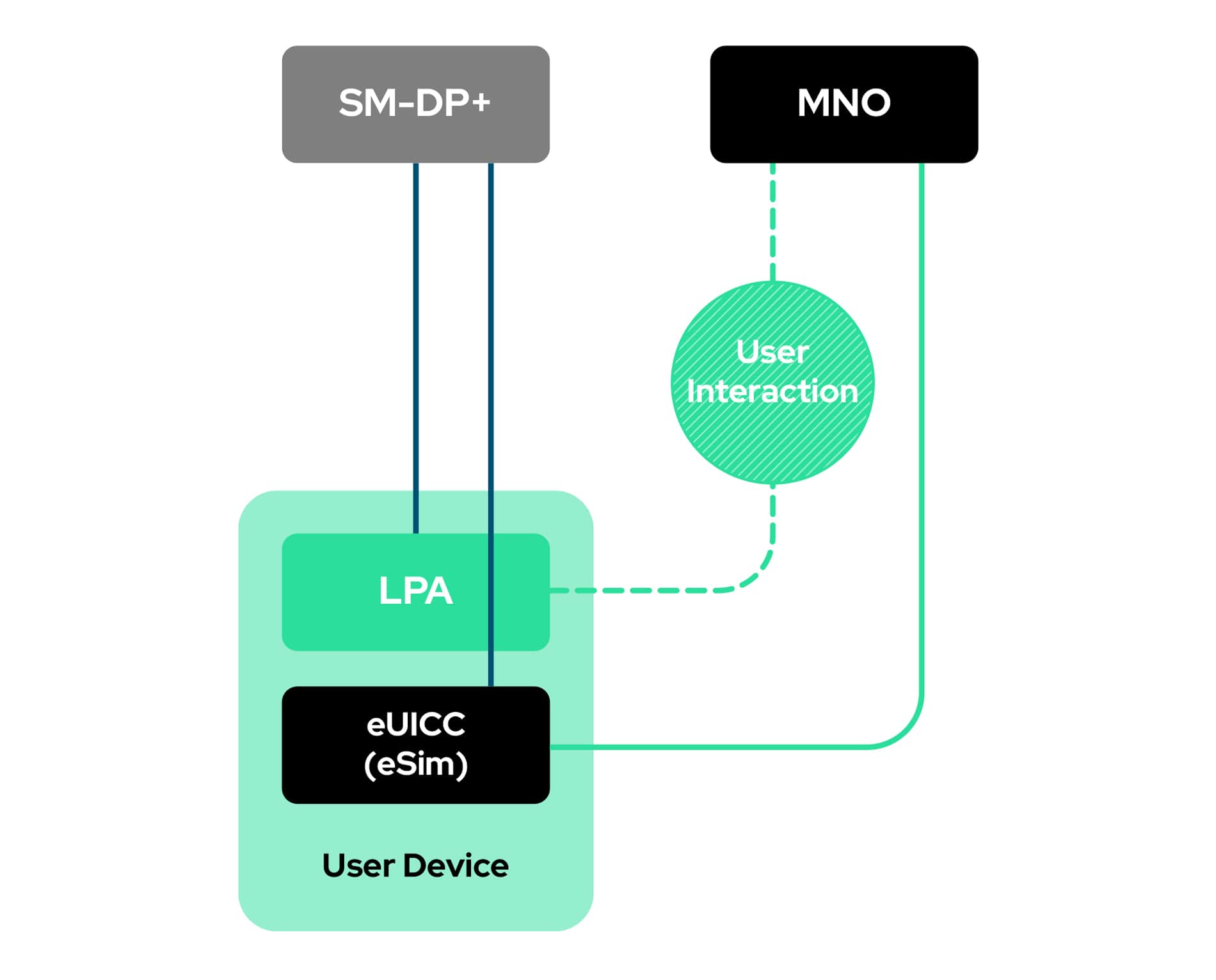New multi-region IoT deployments can look forward to the benefits of this standard, with enrollment of operator profiles, cost reduction and adaption to regional regulations with more dynamic and flexible operations. All of this supported through their cellular connectivity provider.
The power of Remote SIM Provisioning
Remote SIM provisioning offers an elegant solution for companies seeking greater flexibility in choosing their MNO partners and the timing of those connections. Traditional SIM cards are inherently tied to a specific MNO, making it inconvenient for companies looking to switch operators, whether for commercial reasons or operational needs. Previously, switching required physically accessing and replacing SIM cards in deployed devices, which proved cumbersome and costly.
Remote SIM provisioning tackles this challenge by enabling the dynamic switching, addition, or deletion of SIM profiles through over-the-air (OTA) reprogramming of eSIMs. This eliminates the need for physically swapping SIM cards and allows for MNO profiles to be deployed precisely when required. This flexibility is especially advantageous for multi-region IoT deployments, enabling devices to seamlessly connect to local networks as needed. It also streamlines manufacturing processes by supporting single stock keeping units (SKUs), reducing costs, and opening up new markets previously hindered by SIM connectivity limitations.
Roadmap towards SGP.32
Usually, Remote SIM Provisioning has been well adopted by consumer devices and MNOs giving the customers freedom to download an eSIM profile. A Local Profile Agent (LPA) on the device, with e.g. taking a picture of the activation code in a QR code, pulls the profile from a Subscription Manager -Data Preparation (SM-DP+) server according to the Consumer RSP Standard.

While IoT/M2M equipment does not come with a standardized user interface, and devices are often distributed in large amount on remote areas, another approach and standard has been used for Remote SIM Provisioning. The M2M RSP solution can push out new eSIM profiles to devices from a SM-DP server, without any user intervention at the device side. Usually this will require extensive interconnections for MNOs and mobile virtual network operators (MVNOs), if not already in place.
SGP.32, released by GSMA, represents the latest technical specification for remote SIM provisioning. It marks a significant convergence of Consumer and M2M approaches, streamlining the industry with a unified standard.
-min.jpg?width=1918&height=1147&name=eSIM-IoT-2%20(2)-min.jpg)
A fundamental change involves shifting much of the operational profile selection intelligence onto the SIM. It introduces an IoT Profile Assistant (IPA) residing in the SIM or on the device, which communicates with a remote connectivity manager to initiate the download of the relevant profile. This remote connectivity manager can then be exposed to the customer through APIs from e.g. a device management system or Connectivity Management Platform (CMP), giving one end-point for dynamic control of massive IoT deployments.
SGP.32 was officially released in May 2023, The device and SIM certification is following, and solutions will be in the market by 2024.

Implications of SGP.32 for businesses and the IoT
SGP.32 holds promising prospects for remote SIM provisioning in the IoT sector. It empowers companies deploying IoT devices by decentralizing business intelligence from the network to the device and SIM. This simplification of profile switching translates to reduced costs and shorter time-to-market.
The flexibility can be implemented under production, soon after deployment or years into a device's lifecycle as new commercial options or operators emerge. By reducing the number of required SKUs, companies can streamline production and distribution, resulting in savings across logistics, manufacturing, and inventory management.
These advantages are particularly relevant for companies with long-term IoT deployments, those exporting devices to multiple countries, and those transmitting high data volumes across various nations. Network profile switching not only enhances current operations but also future-proofs IoT deployments over time.
Optimizing Remote SIM Provisioning
Companies planning to harness the potential of remote SIM provisioning should engage with their connectivity providers to assess their readiness for SGP.32 adoption. Providers like Com4, with their extensive MNO relationships, global infrastructure, and industry expertise, are well-positioned to assist companies in optimizing their IoT solutions.
One such offering from Com4, a carrier-grade mobile network designed to provide resilient and flexible multinational connectivity.
While both IoT use-cases and deployment models are vast, a tool-suite of Remote SIM Provisioning solutions are needed. And SGP.32 fills in a needed gap for companies to further be capable of designing new innovative IoT solutions, reducing cost, through improved flexibility, and with enhanced competitiveness in the dynamic world of IoT connectivity.
Ready to take full advantage of Remote SIM Provisioning for your IoT solutions? Contact our IoT expert at Com4 today to explore how we can tailor innovative technology to your specific needs and help you stay ahead in the rapidly evolving IoT landscape. Your future in connected devices begins with a conversation.








